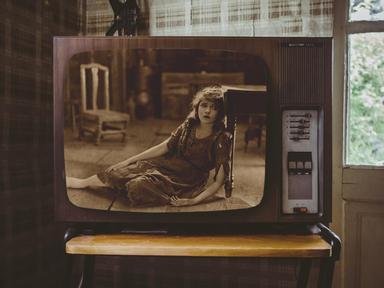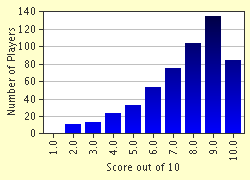Quiz Answer Key and Fun Facts
1. "Uhura", the comely communications officer on the original "Star Trek" series, was played by Nichelle Nichols, a former singer and dancer who once performed with Duke Ellington. Apart from the fact that she was one of the few African American actresses then being featured in a regular role on prime time television, what else did Ms. Nichols do while on "Star Trek" that earned her a place in TV history?
2. In the 1960s, television was far from a progressive medium. However, there were a few shows that sought to portray African American characters in a positive light. One such show was "Julia", which starred Diahann Carrol as the self-supporting widowed mother of a young son. What was Julia's profession on the show that bore her name?
3. Most diehard fans of "The Dick Van Dyke Show" know that the show's longest audience laugh occured during the episode in which Rob becomes convinced that his and Laura's new baby was accidentally switched with another couple's baby at the hospital. The punchline comes when the other couple, who Rob has telephoned and informed of the "mistake", show up at the Petries' home and turn out to be African American. What future star of the classic TV suspense series, "Mission Impossible" played the father of the "switched baby"?
4. "Get Christie Love" was a much-hyped police drama that appeared briefly on prime time TV in the early 1970's. Unfortunately, the show's star and its producers had a major falling out that could not be reconciled. Who played tough African American cop, Christie Love in this short-lived TV series?
5. In the late 1960s, comedian Flip Wilson was a stand-out as the sole male African American host of a weekly prime time variety show. Among Mr. Wilson's most popular recurring characters was a big-mouthed, mini-skirted diva whose catch phrase was a falsetto-voiced "The devil made me do it!" What was the name of Mr. Wilson's female alter ego?
6. In the late 1960s, Clarence Williams III played undercover hippie cop, Linc, on the "Mod Squad." In the 80s, he played the violent father of one of that decade's most successful pop stars in the hit film, "Purple Rain". Whose father did Clarence Williams III portray in the film?
7. Actor Morgan Freeman has appeared in such critically acclaimed films as "Driving Miss Daisy" and "The Shawshank Redemption." But back in the 70s, Mr. Freeman's main role was as a literacy-promoting character on the PBS children's show, "The Electric Company". What was the name of his stretch suit-wearing character?
8. John Amos is perhaps best known for his roles as the elder "Kunta Kinte"on "Roots" and Esther Rolle's husband on the 70s' sitcom, "Good Times". However, before he played either of those roles, Mr. Amos made a name for himself as "Gordy, The Weatherman" on one of the 70s' most popular sitcoms. What was the name of the show in which John Amos played a weatherman at a local TV station?
9. Among the many talented actors who populated the 1970s' TV show, "Fame" was Debbie Allen, who played the school's dance instructor. Which female star of a popular 80s' TV show also happened to be Ms. Allen's sister?
10. Isabelle Sanford is best known for playing Louise Jefferson on the 1970s' sitcom, "The Jeffersons". But prior to her role as the outspoken "Wheezy", she appeared in one of the greatest film classics of all time, playing a similarly outspoken maid opposite a married couple portrayed by Katherine Hepburn and Spencer Tracy. What was the name of the film?
Source: Author
gretas
This quiz was reviewed by FunTrivia editor
ladymacb29 before going online.
Any errors found in FunTrivia content are routinely corrected through our feedback system.

